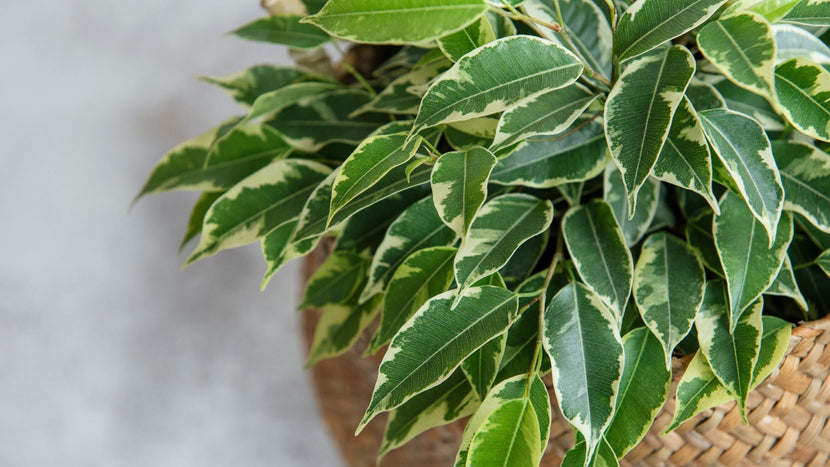How to Care for Ficus Plants
Plant Guide

Ficus Plants can be found in many homes around the country. They make great plants for staging homes, or as a centerpiece in a room. The come in many shapes and sizes: some have small weeping green leaves while others feature extra large Ruby Variegation.
While they can be picky, with the right tips and tricks, Ficus Plants can be a breeze to care for!
Ground Rules
Light
These indoor trees can handle various light conditions, from low light to bright, indirect sunlight. Be sure to choose the best spot in your home and leave your tree there permanently. Moving your tree around the home could cause it to drop its leaves because of an environmental change. If you choose to take your Ficus outdoors, be ready for it to drop its leaves at first. Make sure you place it in a bright spot that receives morning light and afternoon shade. In a short time, your tree will grow new leaves and thrive outdoors while the weather allows.
Water
The Ficus plant prefers to dry out some between watering, but do not let the soil completely dry out. We recommend that you water your tree every 5 to 7 days, or when the top inch of soil is dry. If you decide to place your plant outside as a patio plant, it will need a more frequent watering schedule. Yellow leaves can indicate both too much or too little watering. Some guess-and-testing may be necessary to find an optimal balance.
Soil
Ficus trees require well-draining soil conditions that remain moist. Any regular potting mix works well for any Ficus that is in a container. You can also add a sand mixture to the potting mix to help prevent the tree's roots from staying too wet. You will also need a container with excellent drainage holes to help the excess water drain out of the pot.
Food
We recommend you use an all-purpose fertilizer once a month while your tree is in its growing season. During the growing season of your houseplant, your tree will show signs of new growth; this is typically spring and summer. When your tree enters its dormancy period, do not fertilize. Over-fertilizing is much more detrimental than under-fertilizing. Its dormancy period will not require fertilizing because it is not growing and does not need nutrients.
Toxicity
Ficus Trees have latex in their leaves and are considered toxic to people and animals. According to the ASPCA, contact with the skin can cause dermatitis, while ingestion can cause oral irritation, salivation, and vomiting. It is crucial to keep any Ficus tree that you own away from any of your pets.
Planting Process
- Repotting a Ficus must be done when the root system has filled the container. You will most likely only need to repot your Ficus tree once every other year during the summer. Do so by removing the tree and soil from its container and trim the lower quarter of the tree's roots. Place your bonsai in the same container with new soil or an entirely new container and new soil; it is all personal preference.
Why Is My Ficus Dropping Leaves?
How Do I Propagate My Ficus Tree?
How Do I Prune My Ficus Tree?
Why Is My Ficus Turning Yellow?
What Kind Of Pests Are Ficus Susceptible To?
Do I Need To Clean The Leaves Of My Ficus Tree?
Types of Ficus Plants:
| Name: | Scientific Name: | Leaf: |
|---|---|---|
| Variegated Benjamina Jaqueline | Ficus benjamina 'Variegata' | Small variegated leaves of white and green, pointed ends |
| Weeping Ficus Benamina | Ficus benjamina | Small, green leaves, pointed ends |
| Golden Gem | Ficus altissima | Large variegated leaves of gold and dark green |
| Moclame | Ficus microcarpa | Small glossy green rounded leaves |
| Burgundy Rubber Tree | Ficus elastica | Large, glossy burgundy leaves |
| Ficus Ruby | Ficus elastica | Large, variegated leaves of deep pink and green |
| Ficus Tineke | Ficus elastica | Large, cream, pink, and green variegated |
| Ficus Audrey | Ficus benghalensis | Large green leaves |
| Ficus Alii | Ficus maclellandii | Long, thin green leaves |
